Bright, fresh, and irresistibly creamy, this Vegetable Pasta Primavera with Lemon Parmesan Recipe is a genuine celebration of spring veggies tossed with comforting pasta and zesty lemon. It’s the kind of dish that feels like sunshine on your plate and is so satisfying you’ll want to make it again and again.
Jump to:
- Why You'll Love This Recipe
- Ingredients & Why They Work
- Make It Your Way
- Step-by-Step: How I Make Vegetable Pasta Primavera with Lemon Parmesan Recipe
- Top Tip
- How to Serve Vegetable Pasta Primavera with Lemon Parmesan Recipe
- Make Ahead and Storage
- Frequently Asked Questions:
- Final Thoughts
- Vegetable Pasta Primavera with Lemon Parmesan Recipe
Why You'll Love This Recipe
Honestly, this recipe feels like a warm hug on a busy weeknight. I love how it takes simple ingredients and transforms them into a creamy, tangy, veggie-packed dish that’s both healthy and indulgent. Plus, it’s flexible enough so you can tailor it to whatever veggies you have on hand.
- Fresh, vibrant vegetables: You get a beautiful crunch and color in every bite that’s pure joy.
- Creamy yet bright sauce: The lemon and Parmesan balance richness perfectly without overpowering the veggies.
- Quick and easy: Ready in just about 30 minutes, it’s a great everyday meal that feels special.
- Highly customizable: Switch up the veggies or add your favorite protein – the sauce plays well with everything.
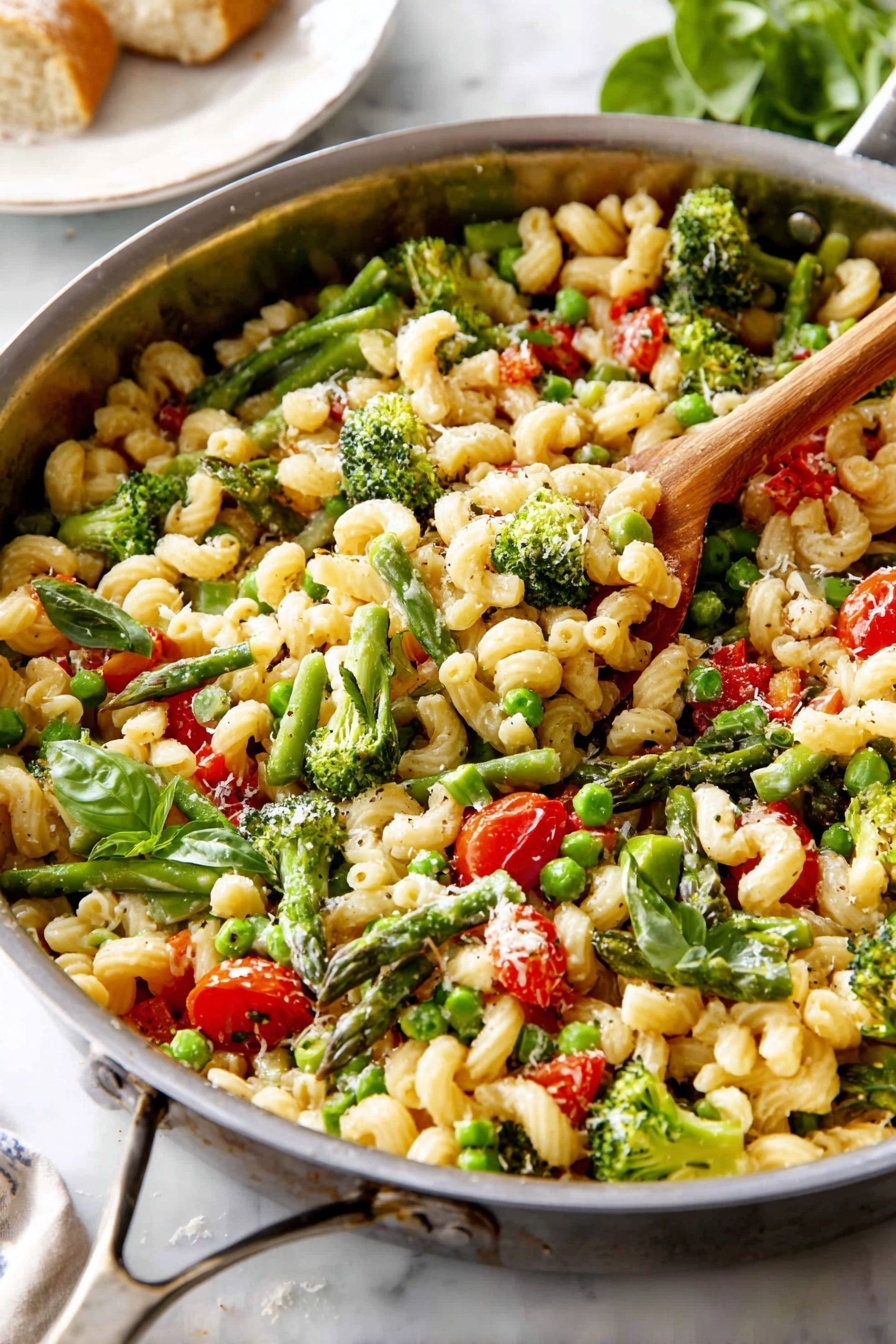
Ingredients & Why They Work
The magic here is all about variety: colorful, crunchy veggies meet tender pasta, all coated in a luscious sauce that’s zingy with lemon and cheesy goodness. When you get your produce, fresh and seasonal is always best; it really makes the flavors pop.
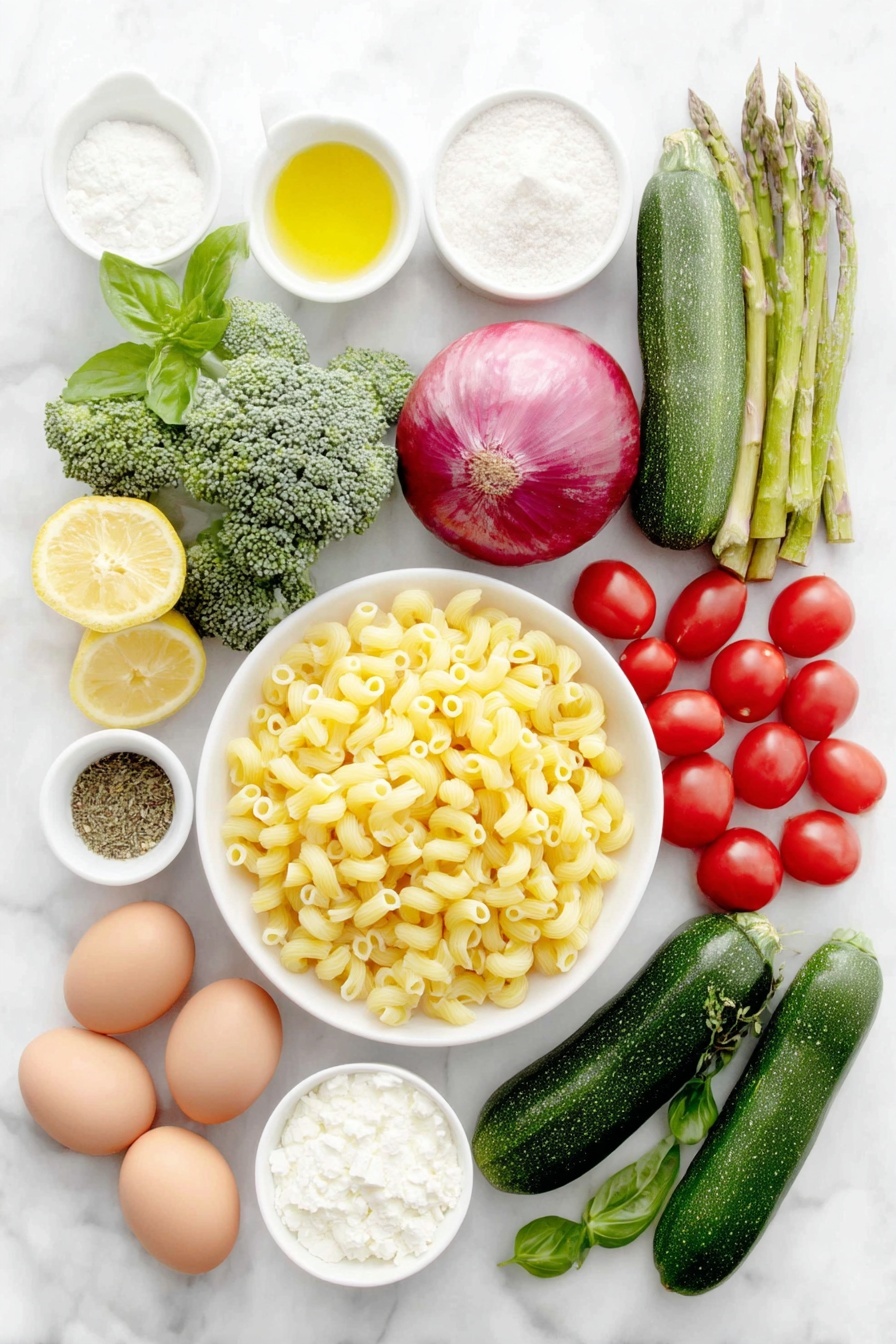
- Cavatappi or other short pasta: Its twists hold onto sauce beautifully; penne or fusilli work great too.
- Extra virgin olive oil: Adds fruity depth and helps sauté veggies without overpowering them.
- Red onion: Gives a touch of sweetness and color contrast.
- Broccoli florets: Adds crunch and earthiness; cut into bite-sized pieces so they cook evenly.
- Yellow squash & zucchini: Mild and tender, they soak up the flavors while giving a nice texture mix.
- Asparagus: Offers a lovely spring freshness; trimming the woody ends is key.
- Red bell pepper: Sweetness and a pop of red that brightens the dish visually.
- Cherry tomatoes: Bursting with juicy tang, partially cooked so they add both texture and moisture.
- Garlic & red pepper flakes: For that aromatic warmth and slight heat that rounds out the sauce.
- Heavy cream & chicken broth: Create a rich but balanced base that coats everything perfectly.
- Cornstarch: Thickens the sauce smoothly without lumps.
- Dried oregano, parsley, thyme: Earthy herbs with subtle savory notes.
- Lemon juice: The zing that lifts the entire dish, adding brightness and a fresh finish.
- Freshly grated Parmesan cheese: Melts into silky perfection — makes all the difference over pre-grated.
- Frozen petite peas: Sweet bursts of green that add texture and color, no need to thaw fully before adding.
- Fresh basil: Finishes the dish with herbaceous freshness and aroma.
Make It Your Way
I’m all about making this pasta primavera truly yours. Over the years, I’ve swapped veggies and added proteins based on what’s in my fridge or what I’m craving. You should too!
- Protein kick: I sometimes toss in grilled chicken, shrimp, or crispy tofu to make it extra hearty — just adjust your veggie quantities or sauce a bit so it all stays balanced.
- Veggie swaps: Try adding snap peas, mushrooms, or baby carrots if you want to mix up colors and textures.
- Dairy-free option: Substitute heavy cream with coconut milk and use nutritional yeast instead of Parmesan for a vegan twist.
- More zing: If you like it zestier, add extra lemon zest or a splash of white wine in the sauce.
Step-by-Step: How I Make Vegetable Pasta Primavera with Lemon Parmesan Recipe
Step 1: Cook the pasta perfectly
Start by boiling your pasta in well-salted water – it should taste like the sea. I always set a timer to test my pasta 2-3 minutes before package directions to get that perfect al dente texture. Don’t forget to reserve about half a cup of pasta water before draining; it’s liquid gold for adjusting sauce consistency later.
Step 2: Sauté the vegetables just right
Heat 3 tablespoons of olive oil in a deep skillet over medium-high. Toss in the red onions and broccoli first and sauté for about 3 minutes — just enough to brighten their flavor but keep them crisp. Add the squash, zucchini, asparagus, bell pepper, and cherry tomatoes, seasoning lightly with salt and pepper. Sauté for 2 minutes more; you want these veggies tender-crisp, not mushy. This is the step where timing really counts, so keep an eye and use a timer if you need to.
Step 3: Whip up the luscious sauce
In the now-empty skillet, add the last tablespoon of olive oil and sauté garlic with red pepper flakes for 30 seconds until fragrant. Turn heat low and pour in the heavy cream. Whisk the chicken broth with cornstarch until smooth, then slowly add it to the skillet along with your dried herbs and salt. Let the sauce simmer gently for 3-5 minutes until it thickens to a silky consistency. Stir in half the Parmesan cheese and lemon juice, then toss in the thawed peas and fresh basil — this adds a fresh pop of flavor and color.
Step 4: Bring it all together
Pour your sautéed veggies back into the sauce and give everything a gentle stir to coat. Fold in the pasta, adding reserved pasta water a bit at a time if you want it looser — I usually skip it, but it’s a handy trick to know. Taste and adjust salt and pepper. Finally, garnish with the remaining Parmesan cheese; that finishing touch is pure comfort.
Top Tip
From countless times making this, I’ve learned that a few small details really bring the best results. I want to share those little nuggets so you nail this every time.
- Don’t overcook your veggies: Tender-crisp is where it’s at — mushy veggies kill the texture. Use a kitchen timer to keep track.
- Test pasta early: Check pasta 2-3 minutes before the box says to avoid that gummy bite.
- Use fresh Parmesan: Grate it yourself for a creamier, more flavorful sauce – pre-grated just won’t do.
- Big pan = easier mixing: A large deep skillet or braiser gives enough room for tossing everything without spills or smushing your veggies.
How to Serve Vegetable Pasta Primavera with Lemon Parmesan Recipe
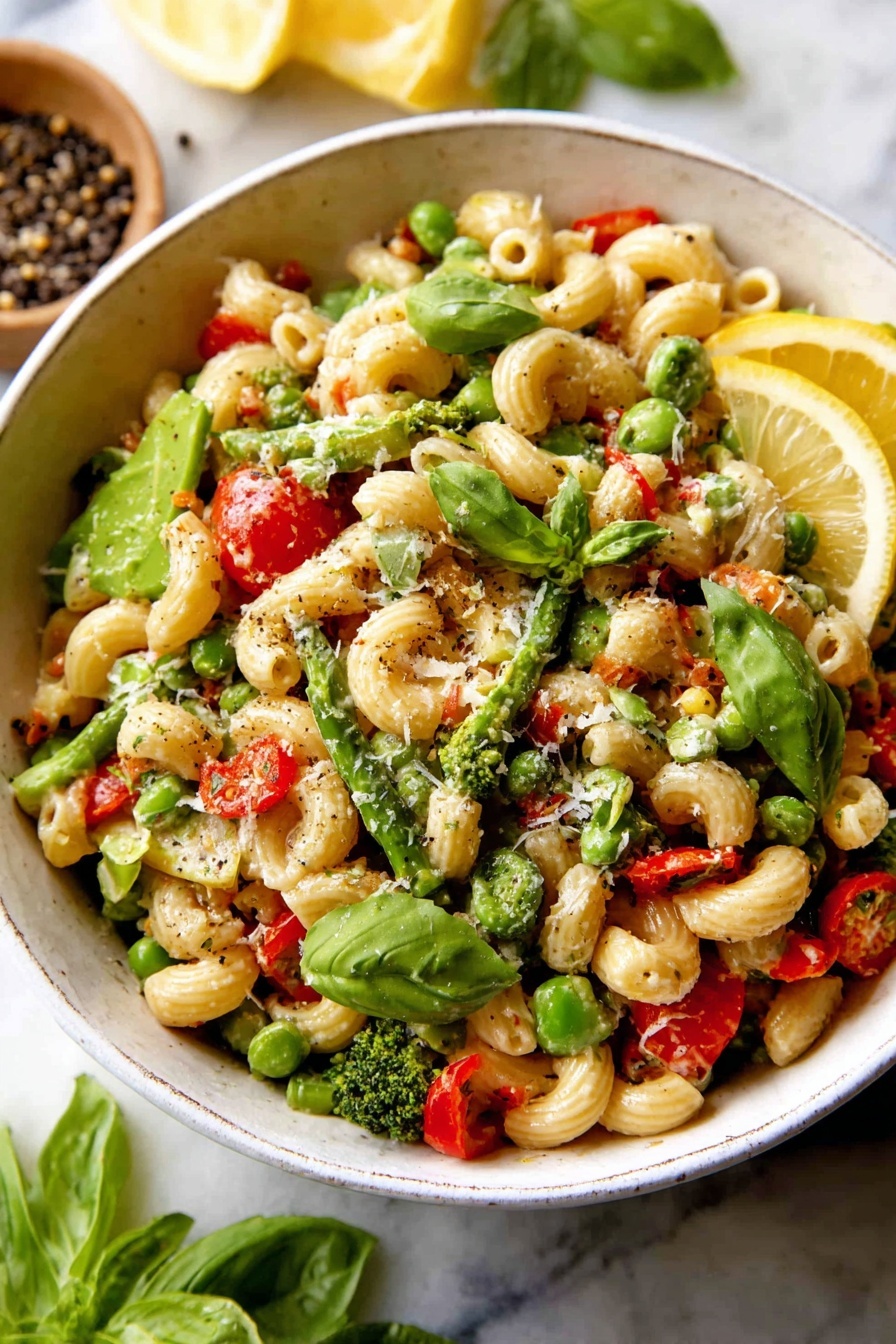
Garnishes
I love finishing mine with a scattering of extra freshly grated Parmesan and a small handful of chopped fresh basil leaves — it adds freshness and a beautiful aroma. A few twists of fresh black pepper on top never hurt either.
Side Dishes
This dish is pretty filling on its own but pairs wonderfully with a simple green salad tossed with lemon vinaigrette or some crusty garlic bread for mopping up that luscious sauce. When I’m feeling extra, a light grilled chicken or shrimp skewer rounds out the meal nicely.
Creative Ways to Present
For special occasions, I like plating this pasta primavera in individual shallow bowls to show off all those colorful veggies. A drizzle of good quality olive oil and a lemon wedge on the side make it look restaurant-worthy. You could even tuck basil sprigs under the pasta edges as a fragrant garnish.
Make Ahead and Storage
Storing Leftovers
I usually store leftovers in an airtight container and keep them in the fridge for up to five days. To keep the pasta from sticking together, I sometimes drizzle a little olive oil before sealing it up.
Freezing
While this recipe freezes okay, I prefer fresh — the cream sauce may separate a bit upon thawing. If you want to freeze, it’s best to freeze just the cooked veggies and sauce separately from the pasta, then combine when reheating for the best texture.
Reheating
When reheating, I find the stove works best to keep that creamy sauce silky—warm it gently over medium-low heat, stirring often. If the sauce thickens too much, a splash of milk or reserved pasta water brings it back to that perfect consistency.
Frequently Asked Questions:
Absolutely! This recipe is very adaptable. Whole wheat pasta adds a nutty flavor and more fiber, while gluten-free pasta works well if you’re avoiding gluten. Just adjust cooking times according to your pasta package instructions.
No problem! You can substitute heavy cream with evaporated milk or a mix of milk and a little bit of cream cheese for thickness. Just keep an eye on the sauce’s consistency as it cooks, and add the cornstarch slurry a bit at a time if needed.
To make this recipe vegan, swap the heavy cream with full-fat coconut milk or a cashew cream, use vegetable broth instead of chicken broth, and replace Parmesan with nutritional yeast or a vegan Parmesan alternative. Sauté veggies in olive oil as usual for flavor.
Yes! You can prepare each component separately ahead: cook and store pasta al dente, chop and store veggies separately, mince garlic, and grate cheese. Combine everything and finish cooking just before serving. This keeps everything fresh and bright.
Final Thoughts
Vegetable Pasta Primavera with Lemon Parmesan Recipe is one of those dishes that feels like a warm, colorful celebration of everything good about simple cooking. To me, it’s perfect comfort food that’s also fresh and vibrant—something I love making when I want to feel nourished without fuss. I really hope you give it a try and find your own favorite ways to enjoy it, just like I have. Trust me, this one’s going to be a new classic in your kitchen.
Print
Vegetable Pasta Primavera with Lemon Parmesan Recipe
- Prep Time: 15 minutes
- Cook Time: 15 minutes
- Total Time: 30 minutes
- Yield: 6 servings
- Category: Main Course
- Method: Stovetop
- Cuisine: Italian
- Diet: Vegetarian
Description
This vibrant Pasta Primavera recipe features a medley of fresh vegetables sautéed to tender-crisp perfection, tossed with cavatappi pasta in a creamy, herb-infused sauce with Parmesan and a hint of lemon. Perfect for a colorful, flavorful vegetarian main dish that is quick and easy to prepare.
Ingredients
Pasta
- 12 oz cavatappi or other short pasta such as penne, fusilli, or orecchiette
Vegetables
- ½ medium red onion, chopped
- 2 cups broccoli florets, cut into 1-inch pieces
- 1 medium yellow squash, sliced and quartered
- 1 medium zucchini, sliced and quartered
- 8 oz asparagus, trimmed and cut into 1 ½-inch pieces
- 1 medium red bell pepper, chopped
- 1 ½ cup cherry tomatoes, halved
- 1 ½ cups frozen petite peas, thawed
- 4 cloves garlic, minced
Sauce and Seasonings
- 4 tablespoons extra virgin olive oil, divided
- salt and pepper to taste
- ¼ teaspoon red pepper flakes
- 1 cup heavy cream (may substitute evaporated milk)
- 1 ½ cups chicken broth
- 1 tablespoon cornstarch
- 1 ½ teaspoons dried oregano
- 1 ½ teaspoons dried parsley
- ½ teaspoon dried thyme
- 2 tablespoons lemon juice
- ¾ cup freshly grated Parmesan cheese, divided
- ¼ cup fresh basil, chopped
Instructions
- Cook Pasta: Cook pasta in a large pot of salted boiling water according to package directions until al dente. Reserve ½ cup of the pasta water before draining the pasta.
- Sauté Vegetables: In a large deep saucepan or skillet, heat 3 tablespoons olive oil over medium-high heat. Add chopped red onions and broccoli florets, sauté for 3 minutes.
- Add More Veggies: Add yellow squash, zucchini, asparagus, red bell pepper, and cherry tomatoes to the pan. Season with ¼ teaspoon salt and ¼ teaspoon pepper. Sauté for 2 minutes until vegetables are tender-crisp. Transfer all vegetables to a large bowl and set aside.
- Prepare Sauce Base: In the now empty skillet, heat 1 tablespoon olive oil over medium heat. Add minced garlic and red pepper flakes, sauté for 30 seconds until fragrant.
- Add Cream and Broth: Lower the heat to low and pour in heavy cream. In a separate bowl, whisk chicken broth with cornstarch until smooth, then add to the skillet along with dried oregano, parsley, thyme, and ¼ teaspoon salt.
- Simmer Sauce: Bring the sauce to a gentle simmer and cook for 3 to 5 minutes, stirring occasionally until thickened.
- Finish Sauce: Reduce heat to low. Stir in ½ cup of freshly grated Parmesan cheese until melted, then add lemon juice. Add thawed peas and fresh basil, warming through.
- Combine Everything: Stir the sautéed vegetables into the sauce followed by the cooked pasta. Add reserved pasta water a little at a time if needed to reach desired sauce consistency. Taste and adjust salt and pepper as needed.
- Serve: Garnish with an additional ¼ cup Parmesan cheese or more to taste. Serve immediately.
Notes
- Do not overcook the vegetables; they should remain tender-crisp to retain texture and flavor.
- Test pasta a few minutes before package directions to ensure it is al dente with a slight bite.
- Use a large deep skillet or saucepan to have enough room to cook vegetables and combine pasta.
- Feel free to substitute or add other vegetables for variety and color according to preference.
- To speed prep, you can use a pre-cut stir-fry vegetable mix but adjust cooking times.
- If adding protein, reduce vegetables or increase sauce to maintain balance.
- Use freshly grated Parmesan cheese only, as pre-shredded doesn’t melt as well or taste as fresh.
- Cook tomatoes less if you prefer them firmer by adding them later in the cooking process.
- Adjust lemon juice amount to taste for more or less citrus note.
- Leftovers keep well refrigerated up to five days and reheat with a splash of milk or water to loosen the sauce.
Nutrition
- Serving Size: 1 serving
- Calories: 420 kcal
- Sugar: 5 g
- Sodium: 550 mg
- Fat: 18 g
- Saturated Fat: 8 g
- Unsaturated Fat: 9 g
- Trans Fat: 0 g
- Carbohydrates: 50 g
- Fiber: 5 g
- Protein: 15 g
- Cholesterol: 45 mg


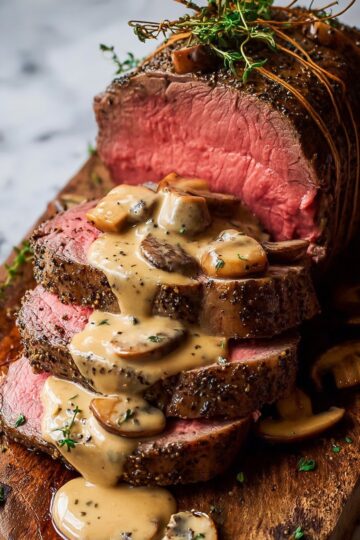

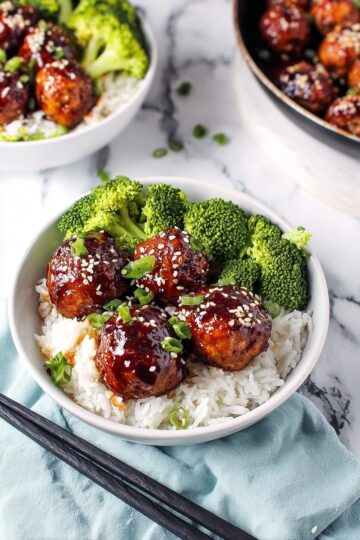
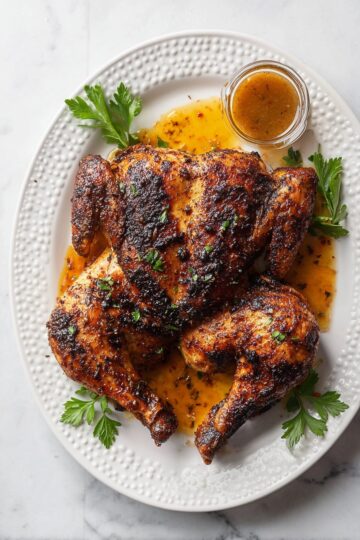
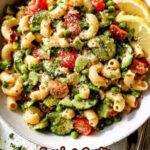
Leave a Reply